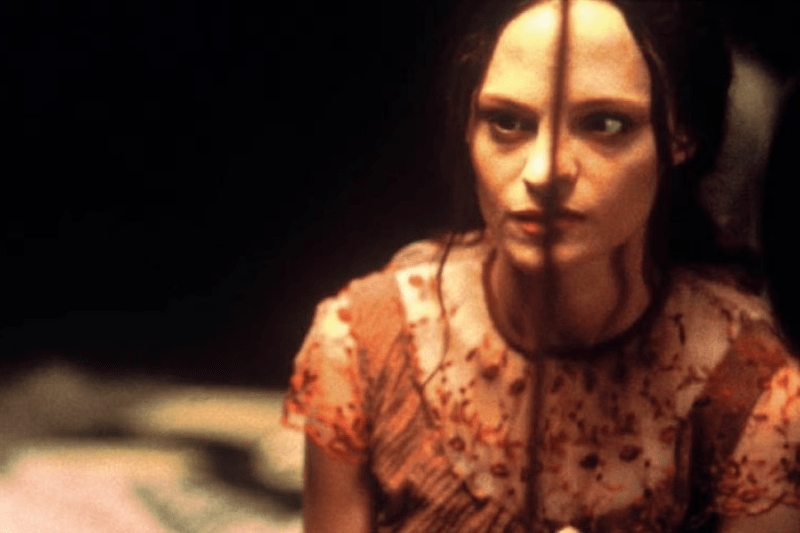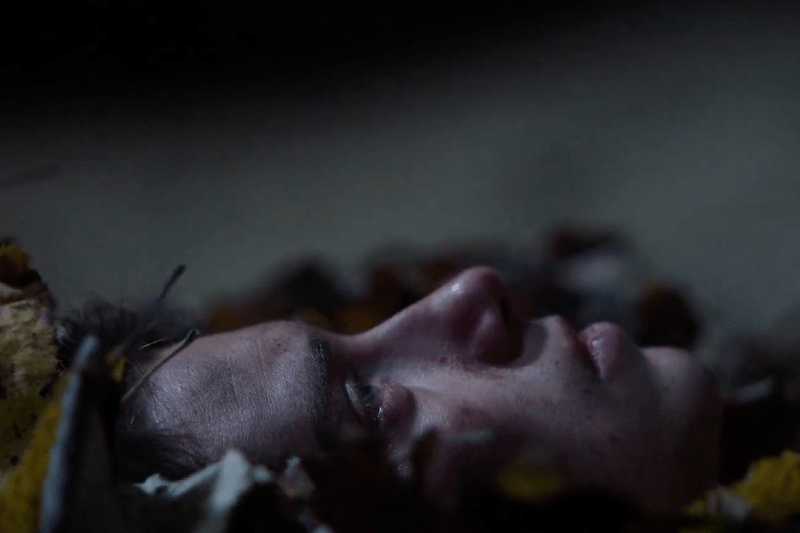Uterus Horror
‘Carrie’ Was at the Forefront of the Genre
June 1st, 2022 | By Molly Henery

NOTE: This piece was originally published at Fangoria‘s website on March 1, 2020.
In a genre typically considered “for the guys,” it’s time to give a nod to the ladies. Uterus Horror is a subgenre of horror films that focuses on the uniquely female experience of puberty and the act of coming into your sexuality, using horror elements to emphasize and/or act as a metaphor for that experience. These films are often ignored in theaters but quickly develop cult followings. Columnist Molly Henery, who named and defined the subgenre, tackles a new film each month and analyzes how it fits into this bloody new corner of horror.
If you’re active on Twitter, you likely saw a meme of a school cafeteria going around. At each table there were various groupings of bands, foods, films, etc. The point was for people to choose which table they would sit at. One version that made its way into my Twitter feed featured groups of different horror films. Each table had groups such as slashers, ghost films, and creature features.
One table had three films that immediately caught my eye, and I knew without a doubt it was my table. The films were Carrie, Ginger Snaps, and Jennifer’s Body. All at once I realized these were the films I was drawn to and I also realized they all fit into an as of yet undefined subgenre of horror. I was compelled to not only research these types of films, but to try and find a way to define them.
I lovingly call this subgenre of horror “Uterus Horror.” Uterus Horror consists of horror films that focus on the uniquely female experience of puberty (or coming into their sexuality), using horror elements to either emphasize or act as a metaphor for that experience. Through researching the many fantastic films that fall into Uterus Horror, it seemed the subgenre likely began in 1976 with Carrie. The film, directed by Brian de Palma with a screenplay by Lawrence D. Cohen, is based on Stephen King’s hit novel of the same name.
From the moment the film begins, the tone is immediately set. Audiences see Carrie being bullied by her peers during gym class. While showering in the locker room, Carrie (Sissy Spacek) gets her very first period. Unfortunately, her extremely religious mother (Piper Laurie) never taught her about puberty, so Carrie panics, thinking something is horribly wrong with her. The other girls are grossed out by the blood and see Carrie’s reaction, so of course they begin to make fun of her. Fans of the film can probably hear the chant “plug it up” in their head as they read this and picture the girls throwing tampons and pads at Carrie. Between the fear Carrie experiences and the shock of her teacher slapping her to snap her out of it, audiences also get the first glimpse of Carrie’s powers when a ceiling light explodes.
There is nothing in the film that explicitly says this moment was also the first time Carrie’s telekinetic ability surfaced. Yet we can surmise this is the case based on Carrie’s own reaction and the correlation to her also getting her first period. From there her powers quickly grow. In the same day she flips an ashtray in the Principal’s office in a moment of rage and then forces a boy on a bike to crash when he taunts her by yelling, “Creepy Carrie, Creepy Carrie!”
Because Carrie’s mother, Mrs. White, raised her in such a conservative, religious home, Carrie was already an outcast. It’s bad enough she doesn’t fit in with her peers, but the moment she experiences puberty she is also an outsider in her own home. Mrs. White associates Carrie’s period with evil, sin, and the Devil.
The single moment Carrie finally feels accepted by her peers is when she goes to prom with Tommy and, to her surprise, wins Prom Queen alongside him. Unfortunately, we all know this moment is short lived as her tormentors did this as a trick in order to dump pigs’ blood all over the unsuspecting Carrie. As the entire school laughs at Carrie’s misfortune, perfectly mirroring the moment Carrie gets her first period, we finally see her powers reach their peak. All of us weird girls (and probably the weird boys too) get a sick satisfaction watching Carrie lay waste to all those who wronged her with her telekinetic powers. Now Carrie has been completely ostracized from the outside world, so she returns to the one place she can feel safe: home.
Carrie returns home, hoping for the love and support of her mother. Unfortunately, Mrs. White not only looks at her daughter as a sinner now that she has gone through puberty, but that her telekinetic abilities also make her a witch. Carrie is met with violence from her mother, leading to both Carrie and Mrs. White’s deaths. Their final moment offers an interesting and subtle commentary about how, once a young girl becomes a woman, she is considered competition to other females. This primal nature is true even with a young woman’s mother. Young women no longer receive the maternal protection they have always relied on.
An argument could be made that Carrie was destroyed by her own biology. Her first period triggered her powers, which ultimately led to her death. Every young woman experiences puberty, but at the time King wrote Carrie and the film was released, it was not a topic typically discussed openly. Even now, the subject is considered taboo, although many are trying to change that. King does such a wonderful job of using Carrie’s abilities to both exacerbate her puberty to an extreme level as well as convey what many young girls go through. There is physical and emotional pain associated with periods that are part of that female experience, and this film displays it for all to see.
Carrie is likely one of, if not the first Uterus Horror film. It’s also the most critically and financially successful film of the subgenre. Carrie currently sits at a 92% critics score on Rotten Tomatoes. The film had a $1.8 million budget and grossed $33.8 million. Carrie is also the only Uterus Horror film to be nominated for major awards including best actress (Sissy Spacek) at the 1977 Academy Awards and best supporting actress (Piper Laurie) at both the 1977 Academy Awards and the 1977 Golden Globes.
King likely spawned the Uterus Horror subgenre. There is a common theme throughout his work that exemplifies young women either going through puberty or fearing becoming a woman, and what exactly that change means. Carrie is the most obvious example, but it can be seen in his other works including IT and even Gerald’s Game, to an extent. In IT, Bev’s fear manifests as blood. This may be subtler to men, but women know Bev doesn’t literally fear blood. That is simply the way her fear of becoming a woman, and the consequences of that, presents itself. King truly is a master of Uterus Horror, whether he intended to have that legacy or not.
The success of Carrie eventually led to a sequel and two remakes, but it still took over 20 years for that to happen. These films didn’t have even a fraction of the success the original Carrie did. In the past decade or so, horror fans have had access to more films that fall into Uterus Horror. These films don’t always get the immediate acclaim we saw with Carrie, but Uterus Horror films often get a lot of love and a cult following within the horror community. While female horror fans have been around as long as horror, their voices are much louder now. This is clearly leading to more horror films showing the female experience in brilliant and unique ways.
Visit our Editorials page for more articles like this. Ready to support more original horror criticism? Join the Certified Forgotten Patreon community today.



